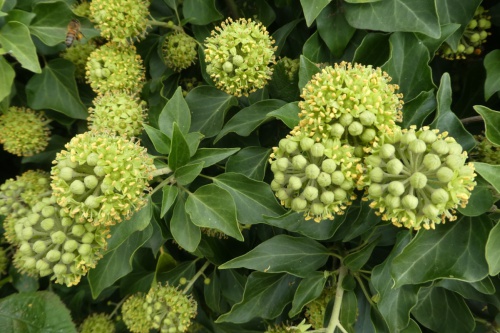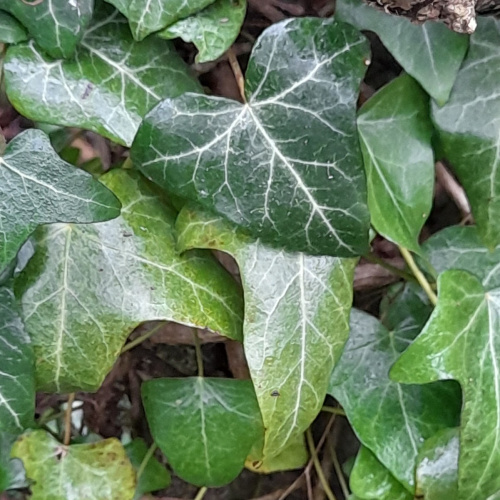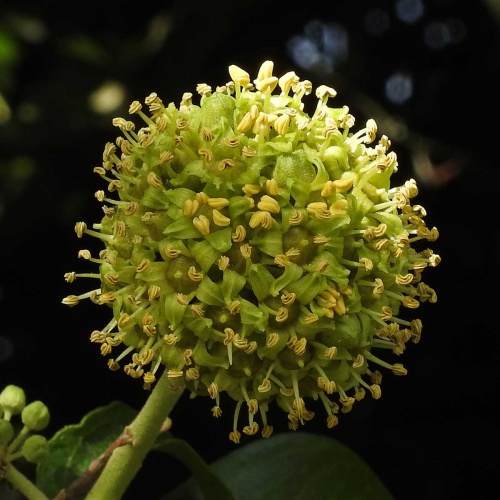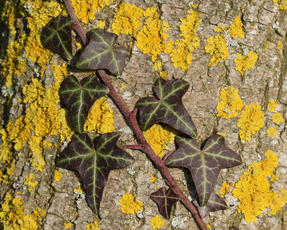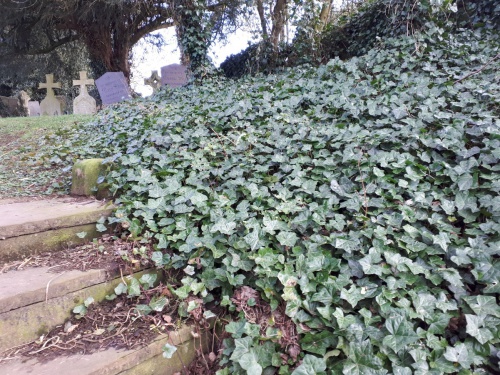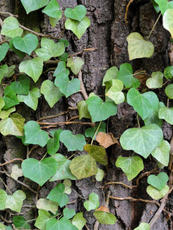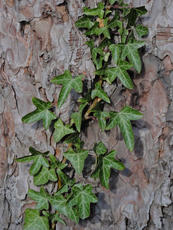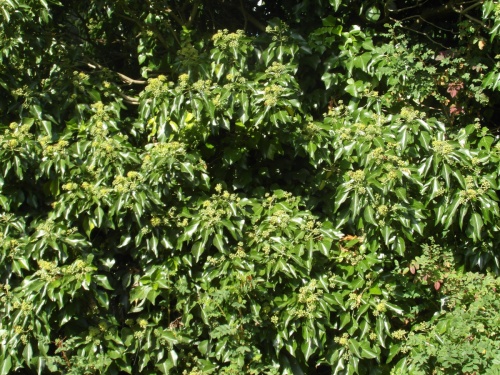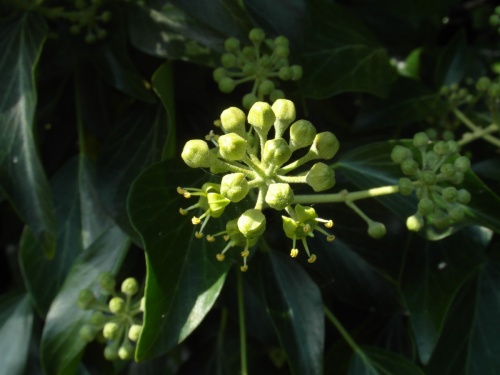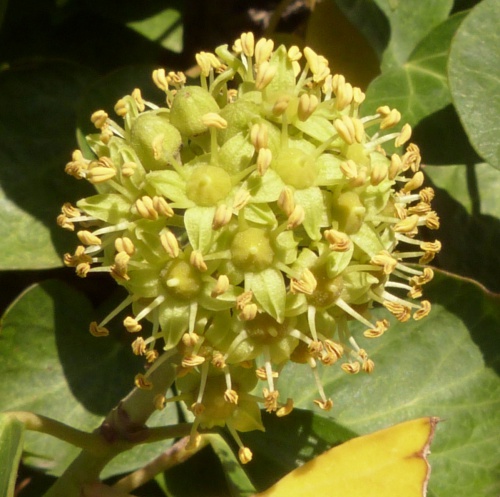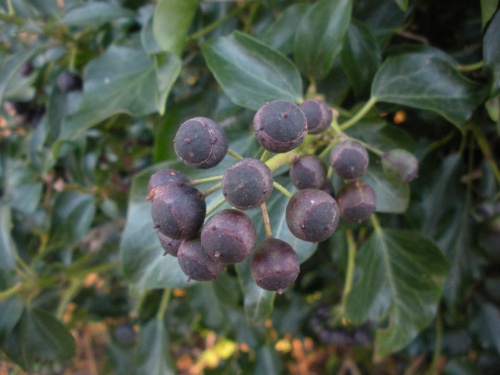Common Ivy - Hedera helix
A woody climber to 30 metres, though often less. Leaves deep shiny green and leathery, often with paler veins, those of immature plant often 3 to 5 lobed, those of mature flowering branches are heart shaped or elliptical and all untoothed. Flowers yellowish-green with yellow anthers, 7 to 9 mm, borne in small, rather dense umbels, petals eventually reflexed. Fruit globose, 6 to 8 mm dull black when ripe in bunches.
Woodland, hedgerows, walls and old buildings.
September to November.
Evergreen.
Very common throughout Britain.
Very common in Leicestershire and Rutland. In the 1979 Flora survey of Leicestershire it was found in 591 of the 617 tetrads.
Leicestershire & Rutland Map
Enter a town or village to see local records
MAP KEY:
Yellow squares = NBN records (all known data)
Coloured circles = NatureSpot records: 2020+ | 2015-2019 | pre-2015
UK Map
Species profile
- Common names
- Ivy
- Species group:
- Trees, Shrubs & Climbers
- Kingdom:
- Plantae
- Order:
- Apiales
- Family:
- Araliaceae
- Records on NatureSpot:
- 731
- First record:
- 11/05/1992 (John Mousley;Steve Grover)
- Last record:
- 04/05/2024 (Carter, Robert)
Total records by month
% of records within its species group
10km squares with records
The latest images and records displayed below include those awaiting verification checks so we cannot guarantee that every identification is correct. Once accepted, the record displays a green tick.
In the Latest Records section, click on the header to sort A-Z, and again to sort Z-A. Use the header boxes to filter the list.
Latest images
Latest records
Boeremia hedericola
Boeremia hedericola is a Coelomycetes fungus which produces large distinctive spots on the leaves of various Ivy species (Araliaceae). It only produces asexual spores from the tiny brown pycnidia (fruiting bodies).


